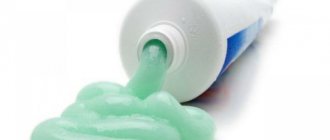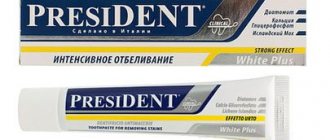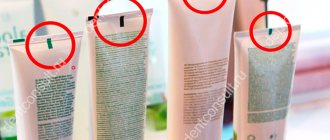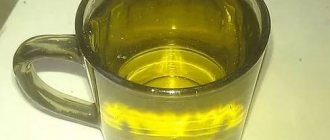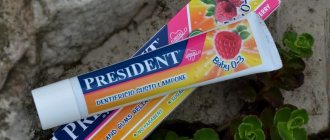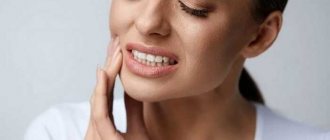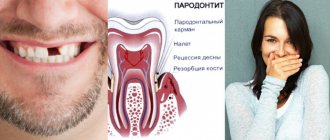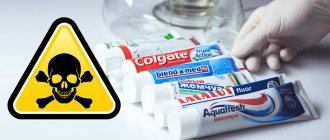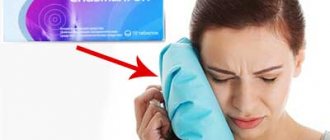People have begun to pay more and more attention to the composition of the products they use in everyday life, and this is no coincidence. It is worth looking at any label, and familiar elements of the periodic table and various chemical compounds appear before the eyes of the consumer, which, on the one hand, can be beneficial, and on the other, harmful.
After all, many components of chemical origin, when they enter the body, accumulate and can subsequently cause serious diseases, which cannot be said about natural ingredients. This is especially true for toothpastes that come into daily contact with our mucous membranes, which have excellent absorption ability.
- Why are regular toothpastes dangerous?
- Fluorides: pros and cons
- Compound
- harmful
- safe
- Benefits of natural remedies
- List of the best
- Thai
- ayurvedic powders
- for children
- Choice
- Making your own tooth powder at home
- Why you need natural toothpaste
Why are regular toothpastes dangerous?
Teeth cleaning products that massively fill the shelves of modern stores are full of chemicals. Some of them contain harmful antiseptics in the form of, for example, triclosan, and aggressive surfactants such as SLS. Both of them, while killing germs and cleaning teeth, simultaneously disrupt the natural microflora of the oral cavity.
And pastes with a whitening effect completely weaken the enamel, and because of this, people often begin to suffer from hyperesthesia, that is, increased sensitivity of the hard tissue of the teeth.
As for children's toothpaste, you should be especially careful when choosing it. After all, you really want to eat the sweet strawberry or banana mass, which also smells delicious. Many children do exactly this, and parents sometimes don’t even suspect it, because you can’t keep track of everything.
As a result, already from the first years of life, harmful chemicals begin to enter the child’s body. And this applies not only to children who love to eat sweet toothpaste. For chemical compounds to enter the bloodstream and the body as a whole, the absorption capacity of the oral mucosa is sufficient.
Obsolete ingredients in toothpastes
Modern pasta is not only healthier, but also safer than the one that was used 50-60 years ago. After all, pumice, egg shells, ammonia, and ash were originally used to create it. Now they have finally gotten rid of this obscurantism. And the composition of toothpastes is based on fluoride, sodium, and triclosan.
There are pastes containing propolis, plant extracts and other natural substances. In fairness, components of plant origin do not differ in particularly important properties. Rather, they are needed to create a positive image of the product and attract additional buyers.
Fluorides: pros and cons
This may seem surprising to some, but fluoride can cause irreparable harm to the human body. This can happen if there is an excess of this substance. When consuming the norm, fluoride is even useful, because it performs a number of important functions, such as:
- increasing the strength characteristics of bones;
- acceleration of bone tissue regeneration in case of injuries (fractures), etc.
- influence on the growth and condition of nails, teeth and hair;
- ensuring caries prevention;
- activation of the body's defenses;
- prevention of osteoporosis;
- helping the body absorb iron;
- participation in the hematopoietic process;
At the same time, fluorine is a strong oxidizing agent, and its excess negatively affects bone tissue and tooth enamel. This chemical can cause mottled teeth, bleeding gums and weak limbs. That is, an excess of fluoride is much more dangerous than its deficiency.
When excess Fluorum enters the body over a period of 1-2 decades, bone fluorosis inevitably begins to develop, causing osteoporosis, osteosclerosis and osteosarcoma.
In children, with excessive concentrations of this substance, even before the teething stage, endemic fluorosis, which is a chronic lesion of tooth enamel, can develop. This disease is characterized by the appearance of spots of different shapes and sizes.
Some countries have even banned (or partially limited) water fluoridation. These include: Sweden, Luxembourg, France, Belgium, Israel, Japan, China and others.
It is worth noting that a person receives a sufficient amount of fluoride without using a paste containing it. To confirm this, a simple example can be given. The norm for an adult is fluoride consumption in an amount of about 2 mg.
If you drink 2 liters of water, eat a few apples and add rice or buckwheat to your diet, the result will be the required 2 mg of daily requirement. After all, water on average contains 0.5 mg of fluoride per liter; two apples contain approximately the same amount of this substance, which is already 1.5 mg.
Buying toothpaste without fluoride or containing it is everyone’s business. Among the manufacturers of natural products, there are also very worthy options that produce organic cleaning products with a small concentration of sodium fluoride. This is, for example, organic people.
The harm of triclosan and the dangers of antibacterial soap
Share
Bacteria have always existed, everywhere, everywhere. All parents want to protect their dear and beloved children from various diseases and the harmful bacteria that cause these diseases. How to do this in our modern world is told to us, first of all, by television advertising. And having watched enough popular commercials about a miracle - soap, which contains some magical substance and takes care of destroying all harmful bacteria and so that we get sick less, what is our reaction? And the reaction is this: caring mothers and fathers rush to buy advertised soap or detergent containing triclosan, and at the same time they are firmly confident in the correctness of their choice, because bacteria will be defeated, which means health is guaranteed.
Is this true, and why do people who lead a healthy lifestyle avoid using triclosan? Let's take a closer look at this issue and start with the main determining factor, we first find out what triclosan is.
What is triclosan?
In Switzerland, in 1965, triclosan was first synthesized - a substance of chlorophenol nature, which is used as an antimicrobial ingredient. Triclosan can slow down or even completely stop the growth of various microorganisms such as mold and bacteria. It has a wide spectrum of antibacterial action and anti-inflammatory properties.
In the modern world, triclosan is used in the production of a fairly wide range of products - toothpastes, washing powders, antibacterial soaps, shampoos, shower gels, detergents and cleaning products, as well as children's toys, medical devices, shoes and even some types of furniture. And this is not a complete list of products that may contain triclosan.
Why, despite all these seemingly positive properties, we increasingly hear negative reviews about it, what is the harm of triclosan?
Why is triclosan dangerous?
First, a few historical facts: in 1968, triclosan was used for the first time in America - as a pesticide! During the Vietnam War, the Americans used the substance “orange” to combat impenetrable jungle thickets - it was sprayed over the trees, and this led to the complete fall of leaves. In the production of ticlosan, impurities are used that are similar in their effect to Agent Orange to destroy wildlife!
The fact is that triclosan is capable of killing not only harmful, but also beneficial bacteria, thereby leaving our body without protection and causing it enormous harm, much greater than the imaginary benefit. Scientists have proven that triclosan causes mutations in microorganisms and the formation of new bacteria unknown to science. What threat such bacteria can pose to humans and the insidious nature of this mutation is unknown to science, which means there are no ways to combat the possible consequences for human health.
Harm of triclosan
1. When applied to the skin and when it enters our body, triclosan disrupts the normal hormonal balance, as it imitates estrogen, a female hormone. This hormonal imbalance can lead to breast, ovarian, prostate cancer, early puberty and fertility problems.
2. Triclosan and its metabolic products block the normal functioning of the thyroid gland, which has a very negative effect on the functioning of the entire body as a whole.
3. Triclosan has the ability to accumulate in the body and this leads to disruption of muscle function and affects the contraction of muscle fibers. And this, in turn, can lead to diseases of the cardiovascular system.
4. Kills not only harmful bacteria, but also bacteria that are friendly and beneficial to our body, which are part of our personal and important for safety ecosystem, depriving our body of natural protection.
5. Triclosan increases resistance to antibiotics. Triclosan is a fat-soluble substance, which gives it the ability to penetrate bacterial walls very easily. When it gets inside a bacterium, it attacks a special enzyme that is responsible for the synthesis of fatty acids that are vital for the bacterial cell. Over time, bacteria develop tolerance to Triclosan, meaning they are protected from its effects. With prolonged use of products with Triclosan, only bacteria remain whose enzymes can resist it. Eventually, these same bacteria will be able to resist antibiotics that may be needed to treat an infectious disease.
6. Triclosan significantly weakens the immune system. We are part of nature and our body needs natural bacteria, viruses, fungi, so that the immune system has the opportunity to “train” and resist diseases in later life. Scientists have proven that children who grew up in an environment using chemical disinfectants and antibacterial products have very weak immunity and often suffer from allergies, asthma and diseases of the immune system.
7. When triclosan interacts with tap water, it binds with chlorine and forms toxic substances - Dioxides. Dioxides can be absorbed into our blood and poison the body from the inside.
8. Triclosan is toxic to nature, pollutes lakes and rivers, soil and oceans, and causes mutations in living creatures that live there.
To protect yourself and your family, carefully look at what you buy, read labels and make sure that triclosan is not listed as an ingredient.
At the moment, the choice of natural hygiene products is quite wide, not all mass-market products contain triclosan, but be attentive to it in advance, it needs to be checked first!
Toothpaste without triclosan: Splat, Corsodaily, ROCS, Paradontax, Weleda, Himalaya Herbal, Eco Dent, Jason, Jordan, etc.
Antibacterial soaps without triclosan: Nevskaya cosmetics, Tar soap, Dr.Proff, Weleda, Jason, any hand-made soap made from natural ingredients.
Deodorant without triclosan: FLUIDES, Crystal Body, Laviin, Jason, Weleda, Herbal clear Sport, Hugo & Debra Naturals, Nature's Gate and many others.
Use natural cleaning, detergents and cosmetics, with a composition that is as close to natural as possible. Use simple and natural soap, cleaning products can be easily prepared at home, and toothpaste should never contain toxic fluoride and triclosan.
I will share with you a good recipe for a cleaning product that can be prepared very easily and simply at home. It cleans well, disinfects, fights grease, and also repels insects - and it's all completely natural!
Natural Cleanser
Ingredients:
- Water - 3 glasses
- Apple or regular vinegar - 1/4 cup;
- Essential oils - oregano, tea tree, orange.
- You can use other oils, according to your taste - a few drops of oil;
- In addition, we will need a plastic spray bottle (not chemical).
Vinegar destroys fungi, viruses and bacteria; it also absorbs unpleasant odors and deodorizes the room. Essential oils have a pleasant smell and have good antibacterial properties.
Preparation: Mix all ingredients in a plastic bottle, add essential oils and shake well.
Usage: This natural cleaner removes dirt, grease, cleanses all kinds of dirt and disinfects well.
It can be used in the kitchen, bathroom, in the nursery for wiping toys or for washing floors; it cleans parquet and tiles well. In addition, this cleaner cleans the air well; after the smell of vinegar disappears (after drying), and this happens very quickly, the pleasant smell of essential oils remains.
Hydrogen peroxide can also be used for cleaning and disinfection.
Compound
If you prepare your own toothpaste, a person knows very well what it consists of. When using a purchased version of a dental cleaner, how can you determine whether it is harmful or not?
It’s very simple: carefully read its composition. Don’t blindly believe beautiful green eco-style labels and manufacturers’ assurances about the natural origin of all paste ingredients. After all, you can write and draw anything you want on a tube, and it is not at all necessary that it will correspond to reality.
Yes, almost all pastes contain natural ingredients. But in what relation to chemical ones: 1% to 100%, 2% or 5%? The answer to this question is always written in small print on the back of the package.
Harmful
Many mass-market toothpastes contain harmful chemicals, the proportion of which in relation to natural ingredients is usually extremely high. And we can say with confidence that when purchasing a paste made using a certain set of components, a person poisons himself.
There are 5 ingredients that should not be in either tooth powder or toothpaste. And not in any proportions.
Table 1. List of the most dangerous components included in mass-produced oral cleansers.
| Name of ingredients | Brief description of properties and principle of operation |
| Sodium laureth sulfate (SLES) and sodium lauryl sulfate (SLS), commonly known as sulfates | These chemical compounds are products of petroleum refining. They have fairly strong oxidizing properties and are also characterized by penetrating ability. Moreover, sulfates are strong allergens, which also does not add any advantages to them. SLS and SLES provide pastes with abrasive, foaming and cleaning properties. But, at the same time, the use of pastes containing sulfates is infinitely harmful, since they do not dissolve in the body, but settle in it. |
| Chlorhexine, metronidazole, triclosan | All these substances are antibiotics. They are usually added to antibacterial toothpastes. While killing harmful bacteria, these components simultaneously destroy the microflora of the oral cavity. That is, they destroy everything: both harmful and useful. |
| Parabens | Propyl, methyl, isobutyl, butyl, isopropyl - all these are parabens, which are preservatives, the main purpose of which is to prevent toothpastes from spoiling. The origin of parabens is unnatural for the human body. After all, these are synthetic products of chemical origin, which, when entering the body, can have a negative effect on the reproductive function of women. Parabens also provoke the development of cancer of the mammary glands, uterus and testes in men, which was proven by scientists back in 2004. |
| Dioform | This substance can be found in toothpastes under the names sim-Dichlorethylene, Acetylene dichloride, or acetylene dichloride, 1,2-Dichloroethene. All of the listed components perfectly lighten teeth, but to the detriment of the enamel. |
| Aluminum lactate | Aluminum lactate is an aluminum salt. More precisely, one of its varieties. It is added to the paste as an anti-inflammatory substance that stops bleeding gums. Also, by affecting the nerve endings of the teeth, aluminum lactate reduces their sensitivity. In this case, the signal transmission from external stimuli does not enter the nerve, and the person no longer feels discomfort when eating cold, hot, sweet or sour. But this does not mean that the teeth have lost sensitivity, this is only an effect created due to the action of a chemical compound. That is, fighting hypertension by brushing teeth containing aluminum lactate is equivalent to treating a painful tooth with a “hole” by constantly taking painkillers. |
There is also a more controversial list of ingredients contained in toothpaste, which is often called all-natural by manufacturers. The nature of their origin is chemical, but they cannot be called particularly dangerous.
Some consider these components neutral in relation to the human body, while others consider them harmful. In any case, they are definitely not capable of having the same detrimental effect on health as, for example, sulfates, antibiotics and parabens.
Table 2. Controversial components of toothpastes regarding possible harm to the body.
| Ingredient name | Short description |
| Sodium carboxymethylcellulose | It is a stabilizer used as a food additive. It is obtained from soda and cellulose. If you rely on conclusions drawn after individual studies, then this component can cause skin irritation, allergies, and stomach upset. However, this is just an assumption that has not been proven. |
| Titanium dioxide | This is a clarifier that gives the paste a snow-white color. In general, the substance is considered absolutely harmless, since it is not retained in the body and is excreted from it in full. But not everyone agrees with this statement. The thing is that experiments performed on mice during muscle research showed the opposite. But at the same time, the mice were given a very large dose of titanium dioxide, so you should not blindly believe the conclusions of these experiments. |
| Saccharin | A well-known sweetener of synthetic origin. Approved in the EU, Russia and the USA. Some people consider saccharin to be a carcinogen. However, this is a subjective opinion, not supported by specific facts. |
| Sodium lauryl sarcosinate | This is the same surfactant, but much more gentle than sodium lauryl sulfate. It is easily removed from the human body without accumulating in it. |
| Cocamidopropyl | Again, it is a surfactant. With its help, the paste becomes thicker and acquires the ability to foam. Made from coconut oil fatty acids. Does not cause significant harm to the body. In extreme cases, it can cause allergies or inflammation of the mucous membrane. |
Safe
Even truly natural toothpastes contain chemical components, albeit in a minimal amount, usually not exceeding 1-5%. They mainly improve the external and taste qualities of the product.
Natural toothpaste also contains components that, at first glance, have scary names that resemble synthetic compounds. But in fact, these ingredients are made from natural materials and are completely harmless.
The thing is that during the manufacture of hygiene products, the natural ingredients used are subjected to extreme processing: evaporation, hydrolysis, heating, pressure. As a result, there is nothing useful left in them, but nothing harmful either.
Table 3. Neutral components in natural toothpastes.
| Substance name | Short description | Functions performed |
| Xylitol | Found in some fruits and vegetables, birch bark, corn cobs | Sweetener |
| Silicon oxide | It is an alternative to calcium carbonate due to less abrasiveness | Plaque removal |
| Sorbitol | It is made from berries and leaves of rowan, plum, cherry, apple, pear, seaweed. | Sweetener |
| Vegetable glycerin | It is obtained by hydrolysis of vegetable oils | Responsible for the “binding” properties of the paste |
| Zinc citrate | Contained in the human body | Helps slow down the hardening of plaque |
| Sodium benzonate | Used as a food additive. In nature, in small doses, it is found in cranberries, apples, raisins, cloves, cinnamon and others. | Preservative |
| Xanthan gum | Is a food additive. Produced by fermentation from sugar syrup. Approved in the EU, Russia and the USA | Thickener |
| Sodium citrate | This is a salt of citric acid. Made by neutralizing acid with sodium | Responsible for regulating pH levels |
| Sodium silicate | This compound is widely distributed in nature. Is a food additive. | Makes the paste structure homogeneous |
| Potassium sorbate | It is obtained by neutralizing sorbic acid contained in rowan juice. | Preservative |
| Maltodextrin | It is a product of starch hydrolysis (molasses) | Improves the binding properties of the paste |
Natural toothpastes should ideally contain only natural ingredients, but finding such a product is not an easy task. In any case, if the dental cleaner consists of: natural clay, calcium carbonate, soda, silicon, essential oils, sea salt, coconut oil, herbal extract and powder, and their total content is over 95%, then such a paste has an ideal composition, and it is worth buying with confidence. All of these components are not only harmless, but also useful.
What is triclosan?
Triclosan is a chemical compound that can prevent the growth of bacteria . It is added to children's furniture, toys, toothpaste, dishes and cosmetics, and household chemicals, supposedly making these products antibacterial. But numerous studies have shown that triclosan does not help get rid of germs any better than regular soap.
Numerous studies since triclosan was synthesized in 1965 have shown that it significantly reduces the number of pathological microorganisms. Protecting yourself from germs has suddenly become fashionable and mandatory, although at the same time people have suffered from infectious diseases and continue to get sick, and those who simply follow basic hygiene rules do not get sick - they wash their hands even with plain water, bathe twice a day, wash all their food nutrition.
Benefits of natural remedies
The most important advantage of natural cosmetics is the natural origin of the components included in its composition, which not only perfectly cope with their functions, but also do not harm health.
There is an opinion that natural teeth cleaning products are also not able to effectively cope with problems such as whitening, for example, or decreased sensitivity. But this is just a misconception. In fact, natural ingredients can take just as good care of a person’s oral cavity.
In addition, several more significant advantages of natural-based paste should be highlighted:
- Most of these products are certified. And this indicates their unconditional safety and high quality;
- packaging is often self-degrading, which also, albeit to a small extent, helps preserve nature.
- they are not tested on animals;
- when producing products with a natural composition, there is no release of harmful substances into the atmosphere due to the absence of synthetic components;
The benefits and effectiveness of organic paste
Organic toothpaste supports oral health without harming the body, but can it replace non-organic toothpaste?
- Organic pastes do not contain fluorine and hydroxyapatite, which are needed to strengthen thinned enamel and reduce its sensitivity;
- If you have a problem with bleeding gums, the action of natural ingredients is not always enough, and then you need to turn to pastes containing a more effective antiseptic, for example, chlorhexidine;
- Whitening with organic paste occurs only superficially, due to the polishing effect. The effect will be less noticeable than when whitening with a paste containing carbamide peroxide.
Unfortunately, organic pastes are not always effective, so they cannot completely replace inorganic ones.
List of the best
People increasingly began to carefully study the composition of the components in teeth cleaning products, trying to abandon harmful chemicals. Unfortunately, today's market is still filled with hygiene products that are not fully natural in composition.
But still, there are not so few manufacturers of organic cosmetics, so anyone will have plenty to choose from.
Thai
Natural toothpastes from Thai manufacturers are unique in their own way. They have practically no analogues and have a basic set of properties necessary for complete oral care.
The pastes whiten well, regenerate gums and strengthen enamel, contain essential oils and are characterized by a powdery structure.
- Herbal remedies help get rid of plaque;
- An alternative is an organic gel cleanser made with mangosteen bark. Its color is also black, it has a pleasant smell and taste. Able to cope with tartar in a few weeks.
- inflammation of the gums and weakening of the enamel will be corrected by a hard paste with clove extract;
- A black cleanser, which has such an unusual color for this product due to the content of bamboo charcoal, will do an excellent job of cleaning tooth enamel;
The main feature of natural Thai pastes is their fairly concentrated composition, so they should be used strictly in doses. To do this, you can purchase a special toothbrush and spatula.
Indian pastes are a good alternative. They are also famous for the predominance of natural ingredients. Indian manufacturers have only positive consumer reviews.
Table 4. The best examples of “healthy pastes” and powders from Thai and Indian manufacturers.
| Product name (brand) | Short description |
| 5 Star Cosmetic | Thai paste with healing, anti-inflammatory and whitening properties. Effectively removes tartar and plaque, contains only organic ingredients. |
| Darlie | Darlie nourishes and strengthens enamel, protects against caries and prevents the formation of tartar, providing comprehensive oral care. |
| Twin Lotus | Twin Lotus is distinguished by its dark coffee color and specific taste, which is given to it by the herbs included in its composition. Contains 10 ingredients of plant origin. Suitable for sensitive teeth. |
| Himalaya | This comprehensive teeth cleaning product from an Indian manufacturer contains herbal ingredients that prevent inflammation and bleeding of the gums. Whitening paste helps get rid of plaque and also protects against its formation. Both products are often sold as a set that provides comprehensive care. |
| Vedica Vedica | Vedica Vedica tooth powders are presented in two popular products: herbal based and with a whitening effect. The first helps to cope with bleeding gums, and the second effectively fights plaque due to the organic acids it contains. |
| Aasha | The product has a powerful healing effect and antibacterial effect. It also removes plaque and prevents the formation of caries. |
| ISME | Main properties: reduction of hypersensitivity, mild pain relief, fight against plaque, caries and tartar. The product also has an antibacterial effect. |
| Kodomo | Children's dental cleaner from a Thai manufacturer contains xylitol and fluorite, which effectively nourish teeth with essential microelements. This mineral paste can be used to clean children's teeth starting at 6 months of age. This is, perhaps, if not the best, then one of the best toothpastes for babies. |
- Quick view
Toothpaste with pineapple and cloves 5 Star Toothpaste with pineapple extract and cloves 5Star 5A Herbal has such a pleasant, tropical aroma that many people choose it because of this. The ability to freshen breath for a whole day is not the only advantage of the drug. Its ability to improve the microflora of the oral cavity, strengthen the gums and roots of the teeth, and eliminate plaque and tartar is also well known.
160 R
- Quick view
Thai toothpaste with cloves ISME Rasyan Thai whitening toothpaste with clove extract ISME Rasyan Herbal Clove Toothpaste witch Aloe Vera & Guava Leaf is a natural product for daily oral hygiene. The product effectively whitens, freshens breath, and prevents the development of caries. It has a powdery consistency and a pleasant aroma.
220 R
- Quick view
Thai toothpaste with noni extract 5 Star herbal 5Star Cosmetic toothpaste with noni extract copes with oral problems much faster and more effectively than other products. Caries, periodontal disease, tartar, smoker's specific plaque, bleeding gums - all this recedes before the powerful healing effects of 5Star toothpaste with noni extract.
160 R
- Quick view
Whitening toothpaste with clove 5 Star 5A Toothpaste with clove 5 Star 5A gently whitens teeth, freshens breath and prevents the development of oral diseases. The product has a pleasant herbal aroma and powdery consistency, due to which it is consumed economically. It is made on a natural basis and is suitable for frequent use.
160 R
- Quick view
Toothpaste with papaya and clove extract 5 Star 5A Toothpaste with papaya and clove extract 5 Star 5A Herbal Clove & Papaya is a natural product for daily oral care. The product has a powdery consistency, pleasant taste and aroma. It prevents the development of dental diseases, freshens breath and whitens enamel.
160 R
Ayurvedic powders
For those who prefer to use non-foaming teeth cleaning products, Ayurvedic tooth powders are suitable. You can purchase them in environmentally oriented online stores.
Most tooth powders are made in India. A distinctive feature of these products is their varied composition and bright aroma.
Domestic tooth powders are more accessible and cheaper. However, they have nothing worthwhile in their composition. That is, they are neither harmful nor beneficial. In their production, no more than 2-3 ingredients are used. Moreover, Russian powders made according to GOST contain calcium carbonate, that is, chalk. And it is a fairly rough abrasive substance that can damage tooth enamel.
For children
Among well-known manufacturers of natural teeth cleaning products, you can easily find toothpaste for children. When choosing, again, you should pay attention to the fact that the product is free of chemicals, parabens, sulfates, antibiotics and other harmful substances.
Children's toothpastes are manufactured under such popular brands as:
- neoBio. Produces fluoride-free products containing a cleansing bio-extract and xylitol that fights pathogenic microorganisms;
- natura Siberica. The manufacturer produces natural products based on Siberian oils, extracts and herbs.
- twin Lotus. It is a line of herbal pastes from Thailand. Children's products are presented in a large assortment. You can choose among dozens of pasta flavors and aromas;
- weleda. German manufacturer of organic pasta for adults and children;
Types of specialized toothpastes
There are many special products for oral hygiene, their composition is different.
Anticarious
Anti-caries pastes help prevent caries. A large number of products can be classified into this class; they contain fluorine or calcium.
Anti-caries preparations for cleaning teeth have various effects, including reducing deposits on teeth and making enamel stronger.
Desensitive
The chemical composition of toothpaste used for tooth sensitivity includes special desensitizing substances. They seal the exposed dentinal tubules and prevent the transmission of the signal by a special liquid located in the micropores of the hard dental tissues connecting to the pulp chamber. Strontium and potassium salts have this effect.
Pastes for sensitive teeth contain a small amount of abrasives, so their use may increase the formation of deposits on teeth.
Anti-inflammatory
Products based on salts and extracts from medicinal herbs have various therapeutic effects on hyperemic and bleeding gums:
- Remove redness of the soft tissues of the oral cavity.
- Fights inflammation.
- Reduces the fragility of the vascular wall.
- Reduce bleeding.
- Improves metabolism in the gums.
Chamomile, calendula, chlorophyllipt, oak bark, sage, as well as some biologically active substances have an anti-inflammatory effect.
Organic
Products from this group are also called natural products. They contain only natural and natural ingredients. Essential oils are used as flavoring agents, and calcium carbonate (chalk) acts as an abrasive.
Before purchasing, you must carefully study the list of ingredients, as plant extracts can provoke allergic reactions.
Whitening
The action of the paste intended for lightening enamel is based on the presence of two components:
- increased content of abrasive, which allows you to mechanically get rid of plaque,
- carbamide peroxide or hydrogen peroxide in low concentration.
Whitening pastes are not recommended for regular use, as this can lead to damage and thinning of the enamel.
Sorptive
The main task of sorption pastes is to absorb harmful substances from the oral cavity: microbes, toxins. This effect is achieved by introducing enterosgel or other sorbents into the composition.
Choice
Natural toothpastes must be selected depending on the individual characteristics of the teeth, as well as taking into account the specific needs of the oral cavity for a particular care.
Pastes have different compositions in accordance with their basic properties. Some are focused on whitening, others on protection, and still others on reducing hyperesthesia.
- The ideal components in toothpastes suitable for sensitive teeth are plant extracts. They will help get rid of pain when taking cold and hot drinks, as well as food. But it is better to avoid the content of coarse abrasive components, sulfates and ingredients that have the property of intense bleaching;
- If you are confident that there is a sufficient amount of fluoride in the diet, you should pay attention to pastes without it. In them, this substance is replaced with a component of organic origin that can perform similar functions without harm to health. This is, for example, algin.
- For bleeding gums, products containing herbal extracts, vitamins, especially B12, and oils are suitable. These ingredients will help relieve gum inflammation and their subsequent restoration;
- natural toothpastes, unlike mass-market products, are able to whiten teeth carefully, without destroying the enamel with harsh abrasive components. In such pastes they are usually replaced with small particles of silicon. Those wishing to achieve a snow-white smile should pay attention to the cleaning product from Logona;
Composition of toothpaste and functions of components
When reading the composition of a toothpaste, you can find an impressive list of ingredients, the purpose of which is not always clear. Each component has certain properties and performs various functions: cleaning or whitening enamel, deodorizing breath, foaming, extending the shelf life of the product.
Abrasive component in toothpastes
The type of abrasive, as well as the size of its particles in the oral hygiene product, determines how effectively plaque on the teeth will be removed, and whether the enamel will become lighter. The larger the particles, the more aggressive the effect on the enamel. Because of this, tooth hypersensitivity may appear, as well as thinning of the surface layer of hard tooth tissue.
The following compounds are used as abrasives:
- silicon (silica),
- sodium carbonate (baking soda),
- calcium carbonate (chalk),
- zirconium silicate,
- calcium pyrophosphate,
- silica,
- compounds based on methyl methacrylate.
Fluoride content in toothpaste
Thanks to fluoride compounds included in the chemical composition of the paste, the anti-caries effect of the product is ensured. Fluoride ions penetrate the structure of the enamel crystal lattice and give it strength, and also participate in remineralization and increase the resistance of hard tissues to the destructive effects of acids and bacteria.
Toothpastes contain a small amount of this component, but care must be taken to prevent its excessive entry into the body - an excess of fluoride can lead to fluorosis or poisoning.
Several types of fluoride compounds are used in toothpastes:
- sodium fluoride,
- tin fluoride,
- aminofluoride,
- monofluorophosphate.
Surfactants in toothpastes
The main function of surfactants is to form foam, which cleanses the enamel from food debris and microbial plaque. Most toothpastes contain sodium lauryl sulfates and sodium laureth sulfates as surfactants.
The substance can cause irritation of the gums and mucous membranes of the cheeks and their dryness, leading to the development of allergic reactions. In addition, taste perception may change after brushing your teeth.
Moisturizers in toothpaste
Polyhydric alcohols, including glycerin and propylene glycol, are used as moisture-retaining components.
Chemical components improve the properties of toothpaste:
- Retains liquid in the paste during storage.
- Provide a plastic consistency.
- Increases freezing temperature.
- Improves the taste of the hygiene product.
- Extend the period of use by preventing early drying.
Flavoring in toothpastes
To give a pleasant smell and taste, synthetic or natural aromatic substances are introduced into the paste, the most popular of which is mint. The manufacturer sometimes adds fennel, anise or lavender to more expensive products.
However, they are not suitable for every person, since the essential oils contained in the paste can cause severe allergies.
Astringents in toothpastes
To make the consistency of the paste convenient for use and preserved throughout the shelf life, astringent components are added to the composition of oral care products:
- carrageenans,
- guar gum,
- gum arabic,
- xanthan gum,
- magnesium aluminum silicate,
- sodium carboxymethyl cellulose.
Supplement E415 (xanthan gum) is considered the most harmless, even if ingested. In rare cases, digestive disorders and abdominal pain are observed, but for them to occur, it is necessary to swallow a large amount of a highly concentrated component.
Preservatives in toothpaste
Preservatives prevent the growth of bacteria inside the tube of paste, and also allow the product to be safe throughout the shelf life of the product. The safety of the product is ensured by parabens and sodium benzoate, the latter can be considered harmless.
The manufacturer sometimes introduces citric acid into natural pastes, but if its concentration is exceeded, side effects may develop: nausea, vomiting, spasmodic pain in the epigastrium.
Sweeteners and dyes in toothpastes
The content of sodium lauryl sulfate in the paste gives it a specific taste, which makes it problematic to use the product as intended. To improve the taste, sweeteners are added: xylitol, stevia extract or saccharin. Xylitol is considered the most optimal remedy, since thanks to its properties, dental health is maintained at an optimal level.
Coloring agents give pastes a pleasant tint, but it is preferable not to choose those that contain artificial additives, the most common of which is titanium dioxide.
Making your own tooth powder at home
You can make your own tooth powder. A homemade product will definitely be natural and, accordingly, harmless and even useful.
The recipe may contain the following components:
- 2 tablespoons of baking soda;
- 1 tablespoon ground turmeric.
- 60 g white clay;
- 1-2 tablespoons of Himalayan salt;
- Essential oil of tea tree, mint, orange;
After thoroughly mixing all the ingredients, the powder can be used.
How to choose safe toothpaste?
In the United States, warning labels are placed on tubes stating that if you swallow toothpaste, you should immediately consult a doctor for help in case of poisoning. Not only will you not find a warning label on the tubes of our toothpastes, but the composition is often not even indicated. It is usually listed on the packaging, which is thrown away.
But still, a tube of toothpaste can tell us something. Have you ever noticed that toothpaste tubes have horizontal stripes of red, black, green and blue? Do you think it's just design? You are wrong. So information about the composition.
- Thus, a black horizontal stripe indicates that the paste contains substances that increase periodontal disease. Such toothpastes should not be purchased by people with gum disease.
- But the red stripe indicates that the paste contains substances hazardous to health, such as fluorine, lauryl, triclosan, polyethylene glycol (PEG), oxybenzene, etc.
- A safe toothpaste containing synthetic substances will have a blue stripe on the tube.
- The safest toothpaste has a green label. A green stripe indicates that the paste consists only of natural raw materials.
Everything we have told you does not mean that you need to throw away all your toothpastes and stop brushing your teeth. Just choose the product more carefully and pay attention to the composition. Make sure there are no such substances:
- Sodium lauryl sulfate (SLS or surfactant)
- Triclosan - triclosan
- Fluoride. The composition of toothpaste should contain less fluoride or none at all. You can always figure out whether your toothpaste contains it by carefully studying the composition. There will always be a “fluoride” hidden in the name. For example, monofluorophosphate, sodium fluoride (tin, aluminum), amino fluoride, etc. Fluorine is also hidden behind the English “Fluoride”. Keep in mind that in regions where drinking water contains fluoride, pastes with this element will be dangerous.
- It should also be remembered that children involuntarily swallow toothpaste, so a safe toothpaste for children should not contain fluoride, but it must contain calcium.
- PEG – polyethylene glycol
- Oxybenzene
Finally, I would like to note that the harm of colored toothpaste is higher than that of white toothpaste. In the next article we will introduce you to reviews of the best toothpastes. Take care of your teeth and smile at all 32!
Why you need natural toothpaste
Most pastes sold in supermarkets are very toxic. They often contain about 90-95% of harmful chemicals. By purchasing such products, people daily “feed” themselves synthetic components, causing irreparable harm to their health.
In turn, buying and using organic toothpaste means taking care of your health in the long term. After all, only natural ingredients created by nature can help strengthen and protect the body, while chemicals have a destructive effect on the health of the teeth and oral cavity.
Perhaps many people do not know that sodium lauryl sulfate is included in shower gels, shampoos and washing powders. Yes, it instantly cleanses, but still it is a chemical that slowly and imperceptibly poisons the human body.
Natural toothpaste ingredients will never cause harm. Moreover, the cost of organic products, if it exceeds the price of a cheap “chemical” paste, is only by a few tens of rubles. By saving them, you won’t be able to get rich, but you can maintain your health by choosing natural remedies.
Buy natural toothpaste
Domestic and imported toothpastes
Which product should you prefer? In general, the composition of both foreign and our native toothpastes is approximately the same. They are made using similar technology, but the components included may have different names. The key difference is producer responsibility. Toothpastes produced by foreign companies always have a clearly described composition. Don't hide it because it could result in a serious lawsuit. But domestic manufacturers do not particularly care about the veracity of the information on the packaging. In many cases, the composition is simply a list of incomprehensible Latin names, so that buyers do not understand what specific product they are purchasing.
From this advice - forget about patriotic impulses and choose a normal imported paste, which clearly describes the composition and does not contain components that are harmful to you specifically. We described the most dangerous ones above. Perhaps they will have a beneficial effect on you. But, if you know about intolerance to sodium sulfate, fluoride or triclosan, watch out for their absence in the official information about the paste.
